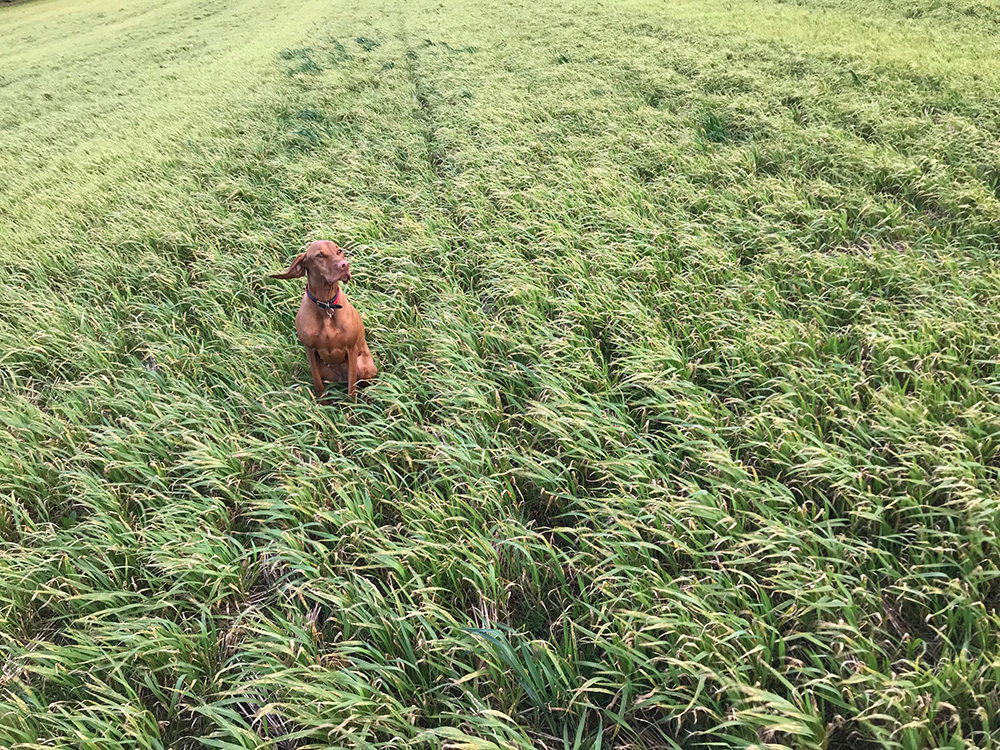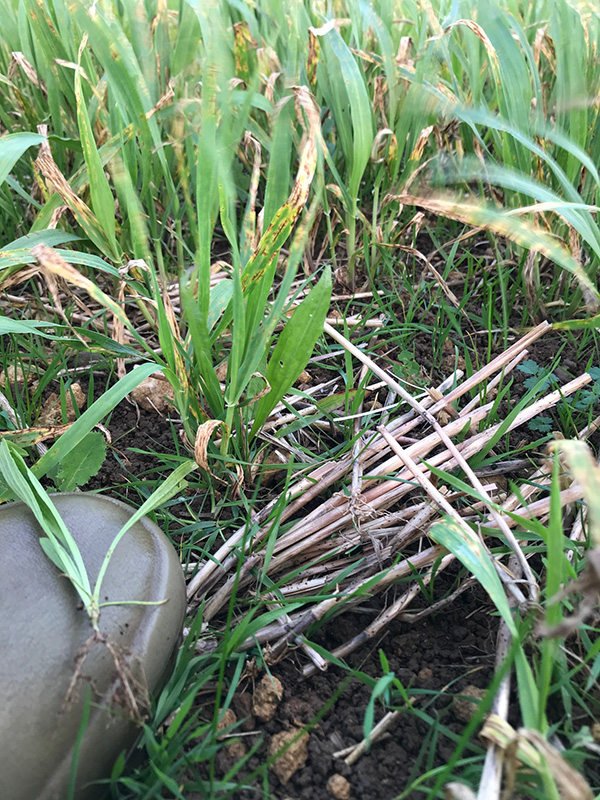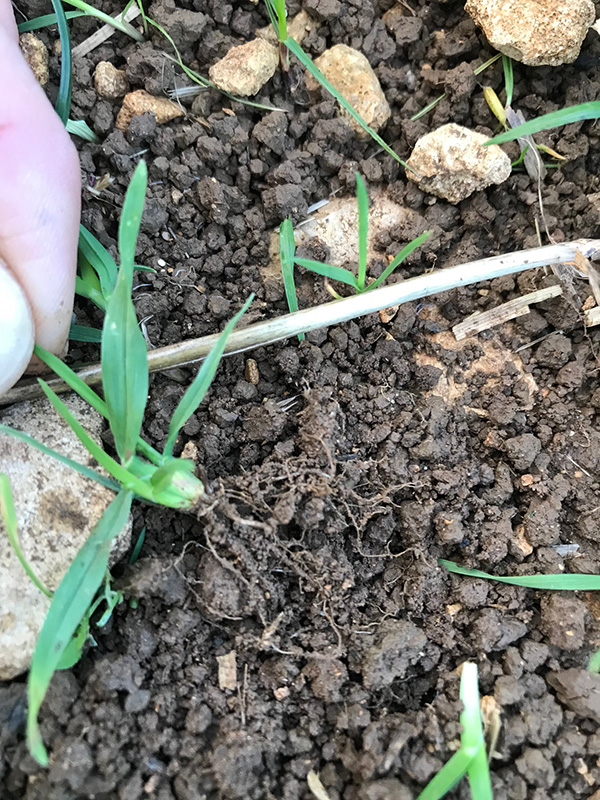At this time of year it is not unusual to receive calls regarding the management of autumn sown grass leys, usually a light autumn graze, plus some colder winter weather is sufficient to deal with most annual weeds or volunteer cereals.
However the recent weather conditions during the late summer and early autumn have created some challenges, namely the abundance of volunteer cereals in some reseeds.
The dry conditions in late August and early September in many districts has led to a flush of cereal volunteers in autumn sown leys. Some crops produced smaller grains which may have been lost behind the combine, made worse by the fact that these grains struggled to germinate quickly in dry post harvest conditions. This has resulted in difficulty getting a ‘flush’ of volunteers to be dealt with before reseeding.
The photos below show an example of a strong population of volunteer Spring Barley amongst a GS4 grass, legume & herb stewardship mixture.
Photo 1 : A dense covering of volunteer Spring Barley

Closer inspection of the field shows that the sown species are present beneath the volunteer cereals, however there is a danger that the seedlings of the GS4 mix are being held back or possibly swamped out by the prolific cereal volunteers. Typically, seedlings have a ‘leggy’ structure and a light green colour if the aerial cover is too dense.
Photo 2: New seedlings attempting to establish under a volunteer cereal cover

The options now are threefold:
In situations where the cereal volunteers are less prolific, the decision may be to leave the field alone, in the knowledge that a spring cereal volunteer will in all likelihood die away around xmas, allowing the reseed space to grow away strongly in the spring.
Alternatively fields with a high volunteers pressure could be topped or flailed by a height of 2/3rds to reduce the amount of material above the reseed and give the new seedlings space and light. This option is quick and a uniform cutting/topping height can be achieved across the field, however there is of course a time and diesel cost.
Finally the area could be grazed lightly with sheep to help let in space and light for the new seedlings. Take care to ensure the seedlings are robust enough for grazing by carrying out the ‘pluck test’. If a new seedlings is plucked up by the stem and pulls out by the roots it is not ready for grazing yet, however if a seedlings breaks off halfway up the stem, it should have enough root anchorage for a light graze.
The photo below shows a Timothy grass seedling that due to the length of time between sowing and examination should normally be ready for a graze, however the dry early conditions have slowed germination and initial growth, its always worth checking before allowing the stock to enter.
Photo 3: The ‘pluck test’ demonstrates this seedlings does not have enough root anchorage to cope with grazing yet.

If the reseed is ready for a light graze, try to manage the animals to graze intensively for a short period of time, ideally back fencing once they have grazed an area to stop them overgrazing and damaging the new seedlings.
If the cereal volunteers are winter cereals it may be appropriate to graze several times between now and the spring, this is because it is unlikely that a winter cereal volunteer will die off naturally over the winter, the extra pressure from the grazing animal can help keep the sward open, ensuring the seedlings have space and light.